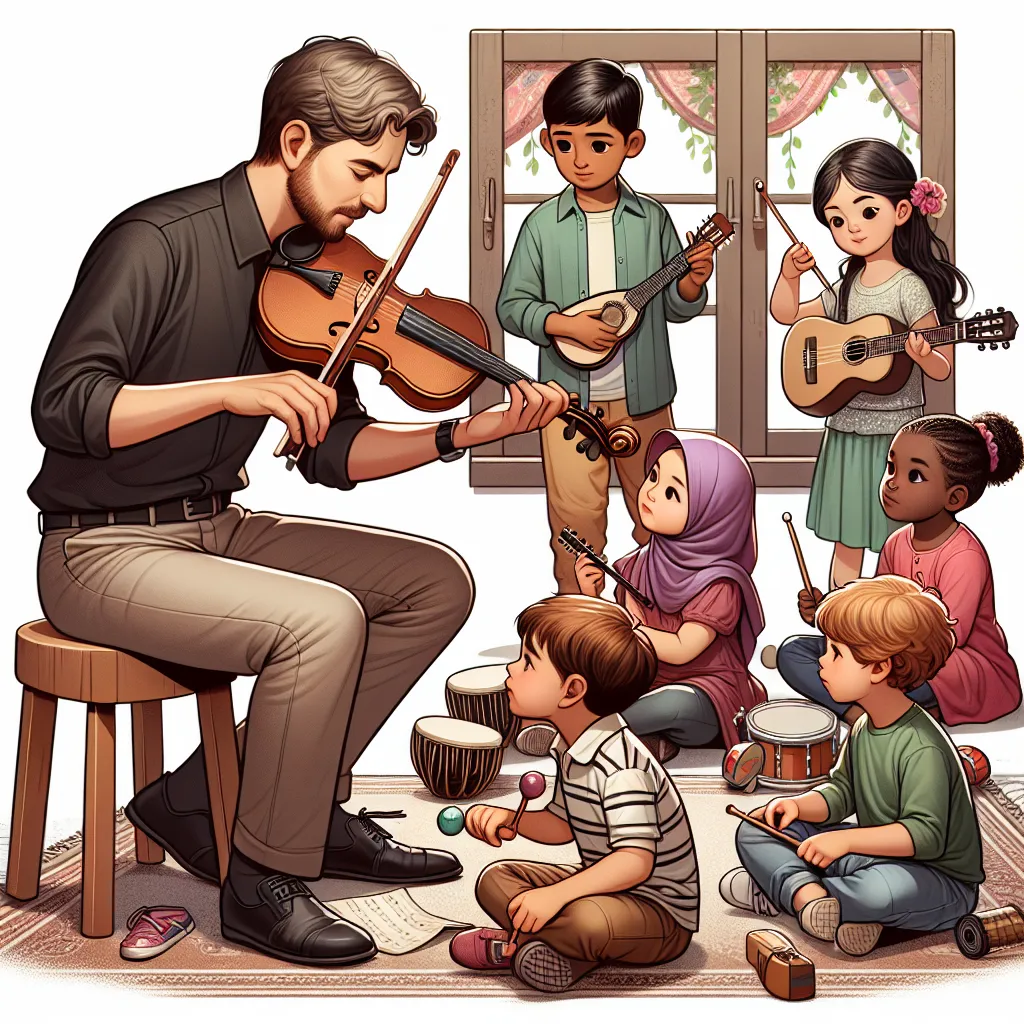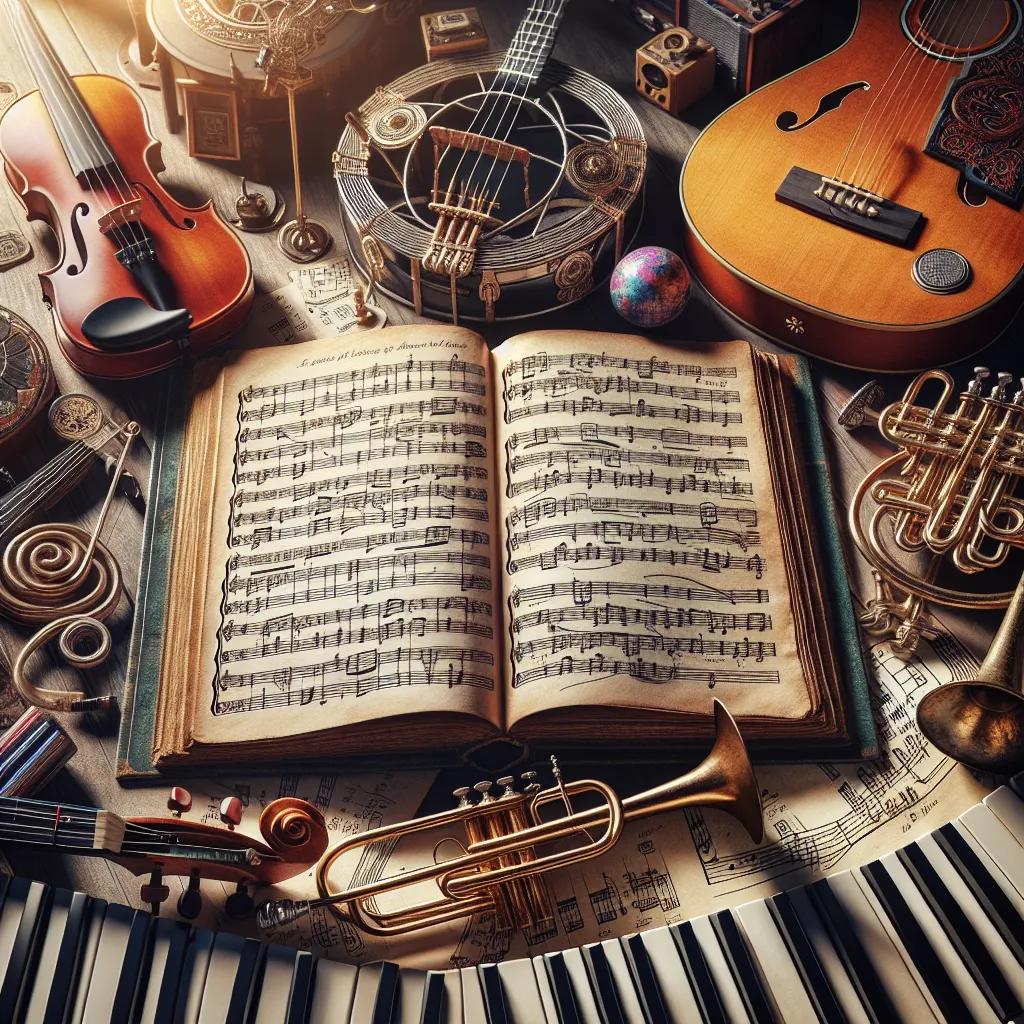Ask AI on The Internet
Question: QUESTION 1 (30) 1.1 Design two activities that can improve the visual skills of Grade R learners. (6) 1.2 Name and briefly discuss three aspects that inhibit children’s movement in modern families. (6) 1.3 Briefly discuss how rolling during infancy supports a child’s holistic development. Mention three different points in your discussion. (6) 1.4 Design a checklist with five items for assessing Grade R learner’s gross motor skills. (5) 1.5 Briefly discuss the importance of midline crossing for Grade R learners. (5) 1.6 Justify the importance of assessing the learners’ progress when presenting movement activities. (2) SECTION B: MUSIC, DANCE AND DRAMA QUESTION 2: (15) 2.1 Briefly discuss the strategies you would use to make all learners feel accommodated during a music lesson in a culturally diverse classroom. (5) 2.2 Musical instruments belong to different instrument families. Name and classify the instruments below according to their families. Use a template similar to the one below to write your answers. (10) 1 3 5 Name of the instrument Instrument family 1 2 3 4 5 QUESTION 3: (20) 3.1 Use the template below to plan a language or mathematics lesson that integrates music and dance. You must redraw the template. (20)L LESSON STRUCTURE LESSON OUTCOME: Introduction Main Content Topic: ________________________ Date:__________ Subject: _________________ Grade: ________ Duration: ___________ (Knowledge and skills Grade R learners should achieve in the lesson taken from the CAPS Conclusion RESOURCES (Include equipment required for class and/or for teacher preparation) ASSESSMENT SECTION C: VISUAL ART QUESTION 4 (15) 4.1 Name five elements of a Grade R daily programme. (5) 4.2 Define the term “art” in your own words. (2) 4.3 Read the excerpt below and answer the question that follows. Learning through play is how preschool children make sense of the world around them. Through play, they develop social and cognitive skills, mature emotionally, and gain the confidence required to try new experiences within the environment. In view of the statement, generate four ideas on how you can use play to stimulate learning in Grade R. (8) QUESTION 5 (20) 5.1 Using natural resources such as wood, leaves, sand, stones, etc., design a resource that you can use to teach the theme “Myself” in a Grade R. The resource should fit an A4 size paper. Take a photo of the resource and paste it on the assignment. Explain how you will use the resource to teach creativity. (10) https://youtu.be/Gd2wQUfF_AA?si=GJSgzbfHGWuvfmt4 5.2 Watch the video in the following link and answer the question that follows. https://youtu.be/Gd2wQUfF_AA?si=GJSgzbfHGWuvfmt4 To open the video, click on the link, the search box will pop in, then double click on the Open Hyperlink and the video will open. Discuss the role that the teacher plays in assisting the children during the art activity. (10) TOTAL: [100]
Certainly! Here's how you can approach each of the questions: ### QUESTION 1 (30) #### 1.1 Design two activities that can improve the visual skills of Grade R learners. 1. **Scavenger Hunt**: - **Materials**: Various colorful objects, a list of items (with pictures), and a basket. - **Description**: Hide the objects around the classroom or playground. Provide each learner with a list of items (with corresponding pictures) they need to find. This activity helps with visual tracking, matching, and shape recognition. 2. **Picture Matching Game**: - **Materials**: Pairs of cards with pictures (like animals, fruits, shapes, etc.). - **Description**: Place the cards face down. Children take turns flipping two cards with the goal of finding matching pairs. This activity enhances memory and visual discrimination skills. #### 1.2 Name and briefly discuss three aspects that inhibit children’s movement in modern families. 1. **Screen Time**: Excessive use of digital devices can reduce physical activity, leading to poor motor skill development. 2. **Lack of Safe Play Areas**: Limited access to safe outdoor spaces due to urbanization can restrict opportunities for free play and movement. 3. **Busy Schedules**: Parents' busy work schedules can result in less supervised and structured playtime for children, inhibiting their physical development. #### 1.3 Briefly discuss how rolling during infancy supports a child’s holistic development. Mention three different points. 1. **Motor Skills**: Rolling helps infants develop muscles and coordination necessary for other movements like crawling and walking. 2. **Spatial Awareness**: Rolling aids in understanding their environment and spatial positioning. 3. **Cognitive Development**: The effort and strategy involved in rolling enhance problem-solving skills and cognitive development. #### 1.4 Design a checklist with five items for assessing Grade R learner’s gross motor skills. 1. **Ability to Run Steadily**: Can the child run without tripping or losing balance? 2. **Jumping**: Can the child jump on the spot and forward with both feet together? 3. **Throwing and Catching**: Can the child throw a ball with accuracy and catch it? 4. **Balancing**: Can the child stand on one foot for a few seconds? 5. **Climbing**: Can the child climb playground equipment confidently? #### 1.5 Briefly discuss the importance of midline crossing for Grade R learners. Crossing the midline (the imaginary line running down the center of the body) is crucial as it enhances: 1. **Coordination**: Helps in the integration of both hemispheres of the brain, improving overall coordination. 2. **Hand-Eye Coordination**: Essential for tasks like writing, where one hand crosses over to work in the opposite space. 3. **Reading and Writing Skills**: Aids in the ability to track from left to right, a fundamental reading and writing skill. #### 1.6 Justify the importance of assessing the learners’ progress when presenting movement activities. Assessing learners' progress helps in identifying individual needs, ensuring that each child is developing appropriately. It allows for tailored interventions and supports to enhance and encourage healthy motor development. ### SECTION B: MUSIC, DANCE, AND DRAMA #### QUESTION 2: (15) #### 2.1 Briefly discuss the strategies you would use to make all learners feel accommodated during a music lesson in a culturally diverse classroom. 1. **Inclusion of Diverse Music**: Use music from different cultures represented in the classroom. 2. **Cultural Exchange**: Have students share and teach songs from their own cultures. 3. **Respect and Sensitivity**: Ensure that all music and activities are respectful and appropriate. 4. **Inclusive Language**: Use language that is accessible and inclusive for all students. 5. **Varied Instructional Methods**: Incorporate different teaching strategies to cater to diverse learning needs. #### 2.2 Musical instruments belong to different instrument families. Name and classify the instruments below according to their families. Use a template similar to the one below to write your answers. **Name of the instrument** | **Instrument family** --- | --- Drum | Percussion Flute | Woodwind Guitar | String Trumpet | Brass Violin | String ### QUESTION 3: (20) #### 3.1 Use the template below to plan a language or mathematics lesson that integrates music and dance. --- **LESSON STRUCTURE** **Topic**: Counting Numbers **Date**: [Insert Date] **Subject**: Mathematics **Grade**: R **Duration**: 45 minutes **LESSON OUTCOME**: Learners should be able to count to ten while engaging in rhythmic movement. **Introduction**: - Start with a song that includes counting numbers 1–10. **Main Content**: - Teach learners the dance steps to the counting song. - Use props like numbers cards. When a number is called out in the song, learners dance to the card with the corresponding number. - Practice counting with actions (e.g., jump for 1, clap for 2, etc.) **Conclusion**: - Review counting numbers using the song and dance steps without props. --- **RESOURCES**: - Number cards - Music player with the counting song - Space for dancing **ASSESSMENT**: - Observe students' ability to count and coordinate movements. - Use a checklist to mark learners' participation and correct counting. ### SECTION C: VISUAL ART #### QUESTION 4 (15) #### 4.1 Name five elements of a Grade R daily programme. 1. **Morning Circle/Group Time** 2. **Free Play/Choice Time** 3. **Outdoor Play** 4. **Story Time** 5. **Snack Time** #### 4.2 Define the term “art” in your own words. Art is the creative expression of ideas, emotions, and imagination through various mediums like drawing, painting, music, and dance. #### 4.3 Generate four ideas on how you can use play to stimulate learning in Grade R. 1. **Role-Playing Games**: Encourage social skills and empathy by having children act out different roles and scenarios. 2. **Construction Play**: Use building blocks to teach concepts of mathematics and physics (e.g., balance, shapes). 3. **Art and Craft Stations**: Promote creativity and fine motor skills through painting, cutting, and gluing activities. 4. **Music and Movement**: Incorporate songs and dances to reinforce language skills and physical coordination. #### QUESTION 5 (20) #### 5.1 Using natural resources such as wood, leaves, sand, stones, etc., design a resource that you can use to teach the theme “Myself” in a Grade R. (Have an A4-sized visual of this resource for the assignment) **Resource Explanation**: - **Materials Needed**: Leaves, small stones, sand, twigs. - **Design**: Create a face on an A4 paper using leaves for hair, stones for eyes, sand for textured skin, and twigs for a mouth. - **Teaching Approach**: - Discuss different parts of the face and their functions. - Encourage children to create self-portraits using natural materials, promoting creativity and self-awareness. #### 5.2 Discuss the role that the teacher plays in assisting the children during the art activity. 1. **Facilitator**: The teacher provides materials and guidance, allowing children to explore and create freely. 2. **Encourager**: The teacher encourages children to express their ideas and praises their efforts, fostering self-confidence. 3. **Observer**: The teacher observes the children’s techniques and offers support or suggestions when needed. 4. **Safety Monitor**: Ensures that children use the materials safely and appropriately. 5. **Problem-Solver**: Helps children overcome any challenges they encounter during the activity. TOTAL: [100]
Think your answer is better than the AI's? Post it below.
Question Tags
If you want your question answered by an AI, click here.







Post your own comment: